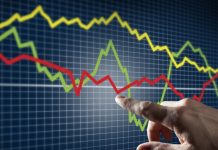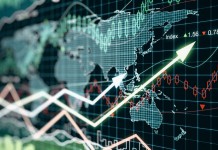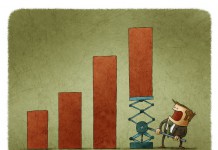 The stock exchange is a place where many millions of buy and sell transactions occur. Each of the exchange participants can make a different decision, buy or sell. The decision can be supported by a deep analysis or completely emotional. Anticipating exactly what may happen with the price of a given stock, bond or any financial instrument is not possible. We can only predict certain scenarios with some probability, just as with weather. There can always be something unexpected, but rather, in the middle of winter, we should not expect heat. The financial markets are similar. You can also specify certain periods that are characterized by specific movements. Charles Dow noted this specifics of financial markets.
The stock exchange is a place where many millions of buy and sell transactions occur. Each of the exchange participants can make a different decision, buy or sell. The decision can be supported by a deep analysis or completely emotional. Anticipating exactly what may happen with the price of a given stock, bond or any financial instrument is not possible. We can only predict certain scenarios with some probability, just as with weather. There can always be something unexpected, but rather, in the middle of winter, we should not expect heat. The financial markets are similar. You can also specify certain periods that are characterized by specific movements. Charles Dow noted this specifics of financial markets.
Charles Dow – precursor of technical analysis
Charles Dow lived in the years 1851-1902 in the United States. He was a financial journalist and passionate about the stock market. He founded Dow Jones & Company and co-founded the famous newspaper The Wall Street Journal. He was also the creator of two stock indices Dow Jones Industrial Average and the Dow Jones Transportation Average. Most of Dow’s ideas were published in The Wall Street Journal. These were some thoughts about the stock market. He never attempted to create any theories from these publications. It was only after his death that all the notes were collected and they were called the Dow Theory.
Dow’s friend Samuel Armstrong Nelson was the first person who became interested in Dow’s concepts and at the beginning of the 20th century published the book “The ABC of Stock Speculation”, which contained many ideas of Dow.
Another person who took up Dow’s theory was his colleague Wiliam Peter Hamilton, who commented the stock markets in The Wall Street Journal. Hamilton was a great enthusiast of Dow’s theory. In 1922, he wrote the book “The Stock Market Barometer” in which he systematized all ideas invented by Dowa.
In 1932 was created another book “The Dow Theory”. It was written by another great enthusiast of ideas created by Dow, namely Robert Rhea. He was a market practitioner who was very successful financially based on the rules of Charles Dow. Rhea extended Dow’s theory a bit. He observed a relationship between the price of shares and the volume. He was also the creator of the concept of relative strength, although at the beginning this theory was not called this way. The book “The Dow Theory” refers to the stock market, because at that time the speculation was mainly focused on this market, but its principles are valid in virtually all segments of the financial market.
Assumptions of Dowa’s theory
Robert Rhea classified several assumptions about Dow’s theory. All assumptions are valid until today, although of course they require some clarification. Dowa’s theory is based on three assumptions:
Manipulation – assumption 1
Manipulation on stock markets is possible only in a short time. Long trends are not manipulative. One or even a group of people is unable to influence the markets in the long term. Of course, there are various manipulations, for example scandals concerning the manipulation of exchange rates or the LIBOR interest rate. However, major trends lasting for several years are not manipulative. Stock markets are hundreds of thousands, and now hundreds of millions of transactions per day. This is an unimaginable number on a yearly basis. It is impossible to control such a complicated process in the long term.
Rhea believed that people overestimate the importance of market manipulation. Also today there are many views that the market is controlled by a handful of people. A lot is said about the so-called Smart Money. There are legends that these are more powerful institutions than banks and investment funds. There’s probably a bit of truth in it, but above all, people working in these institutions are able to analyze the market situation perfectly and has huge capital. They know perfectly well whether the market is in the allocation or distribution phase. They have enormous capital, which allows them to survive longer periods of loss, in contrast to the average player, who long ago throws out of the market due to stop-loss orders. Probably they even often lead to the so-called breaking of stop-loss orders, to buy at a lower price. The mechanism looks simplified in the following way. Smart Money sells 20 thousand of shares. They give out stop-loss orders and the price is reduced to a much lower level. Then the same player buys 30 thousand of shares at a much more favorable price, or 10 thousand share more. And so this mechanism is repeated until Smart Money gains a large enough long position.
The averages discount everything – assumption 2
The averages discount everything, that is, indeces will show moods in the markets. The situation of individual stocks should always be compared to the moods prevailing in the broad market depicted by stock market indices. During the bull market, even companies with inferior foundations have a chance to go up and vice versa, when the bull market reigns, they also lose companies with solid foundations.
Dow and Rhea applied this principle to the two stock indices Dow Jones Industrial Average and Dow Jones Transportation Average. Charles Dow defined it in the following way. “The market is not a wind-blowing balloon, the market as a whole presents the efforts of generally well-informed people to adjust prices to the existing values in the not-too-distant future.” Today, we could refer to many other stock market indices such as the S&P 500 , NASDAQ 100 and many more. In addition, the indices should be confirmed. If one sees the beginning sale, and the other one goes up, it is a warning signal.
The Theory is not infallible – assumption 3
Dow’s theory is not infallible and it is certainly not a machine for earning money, moreover, like any theory. It must be used with caution and supported by many additional analyzes.
Theorems of Dow’s theory
Rhea in his book, in addition to assumptions, also described Dowa theory theorems. They remain valid today.
Dow,s three movements – theorem 1
There are three moves on the market. The main trend, long-term, lasting from just under a year to even a few years. The medium-term trend, which is the correction of the main trend and lasts from several weeks to several months and the short-term trend lasting several days, and a maximum of a few weeks.
Primary bear markets – theorem 2
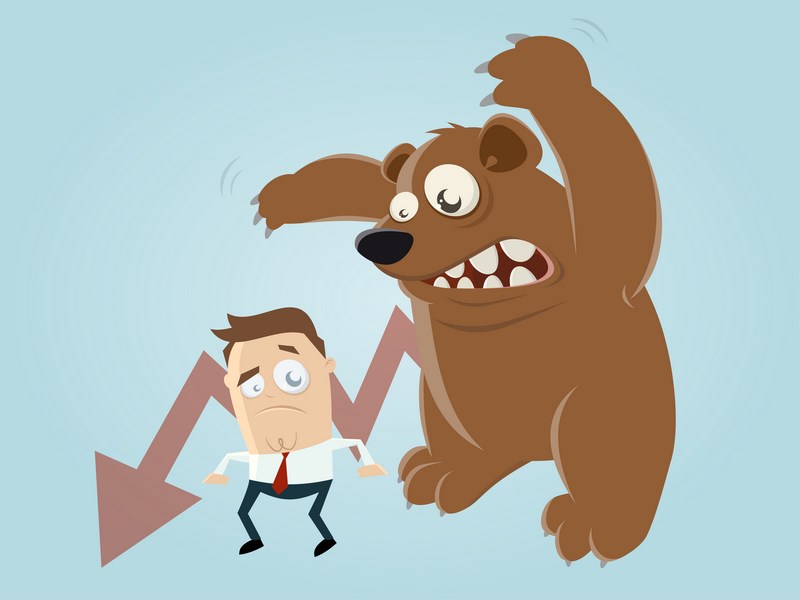 Bear market is a period of intense drops in stock prices. The bear market usually starts with tests of new peaks with declining volume, the so-called distribution. In turn, the breakdown is accompanied by an increase in volume. The bear market is caused by the outbreak of crises, the economic slowdown, the bursting of speculative bubbles, etc. The range of declining stock prices from recent peaks is between 20 and 50 percent. It usually takes about a year. The downward trend is interrupted by upward adjustments.
Bear market is a period of intense drops in stock prices. The bear market usually starts with tests of new peaks with declining volume, the so-called distribution. In turn, the breakdown is accompanied by an increase in volume. The bear market is caused by the outbreak of crises, the economic slowdown, the bursting of speculative bubbles, etc. The range of declining stock prices from recent peaks is between 20 and 50 percent. It usually takes about a year. The downward trend is interrupted by upward adjustments.
Primary bull markets – theorem 3
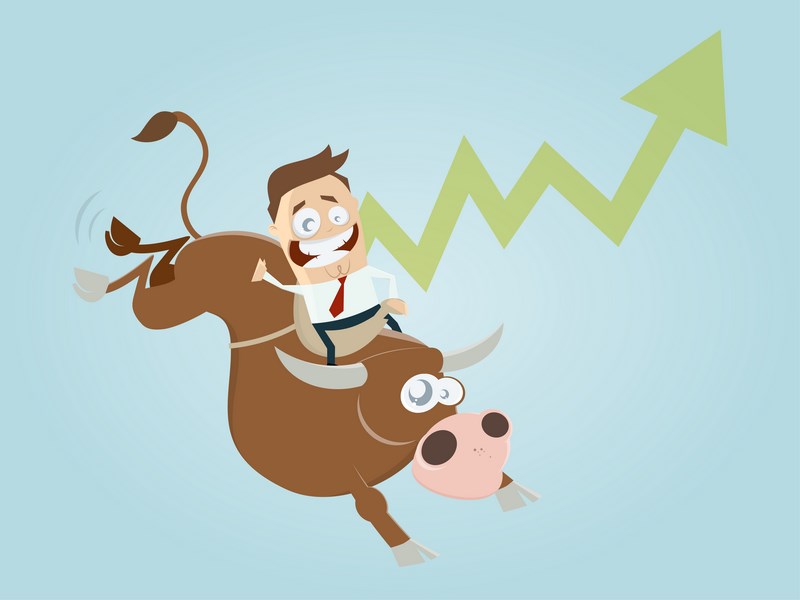 Bull market means long-term upward trend, bull market. Shares after a strong decline are starting to be attractive to Smart Money, who are not afraid to enter the market, while most are even afraid to think about the stock market. The allocation process begins. The bull market lasts on average over two years. Stock prices are on average rising by around 77% since the last bear market.
Bull market means long-term upward trend, bull market. Shares after a strong decline are starting to be attractive to Smart Money, who are not afraid to enter the market, while most are even afraid to think about the stock market. The allocation process begins. The bull market lasts on average over two years. Stock prices are on average rising by around 77% since the last bear market.
Secondary reactions – theorem 4
Secondary reactions are considered to be a decline in the bull market or bear market increases lasting from a few weeks to several months and characterized by the abolition of the last movement between 33% and 66%.
Summary
Dowa’s theory allows us to characterize market behavior. It can be said that it puts together some patterns that have lasted for years. First, we have the allocation, the beginning of the bull market, then the main trend and finally the distribution. Of course, the main trends are lengthening, if only because of the activities of central banks, which pump huge amounts of money into markets, but the schemes do not change. The theory, despite being over 100 years old, is still valid today, because human behavior will always be the same, and the stock market will always be greed and fear.
CFDs have opened many markets for retail investors. Additionally, thanks to leverage, we can start trading with really small capital. it is very important to choose a stable broker who will act as an intermediary in CFD transactions. There are two types of brokers, Market Maker and STP/ECN. The first one is always the other party to the transaction, and the other one should theoretically transfer the transactions to liquidity providers, but it is different. Therefore, a very important element is a stable trading partner, in this case a broker.





![How to install MetaTrader 4 / 5 on MacOS Catalina? Simple way. [VIDEO]](https://comparic.com/wp-content/uploads/2020/07/mt4-os-218x150.jpg)


